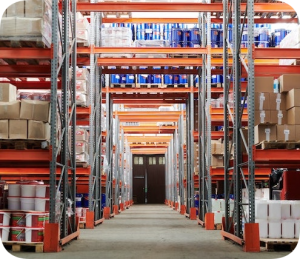 Earlier this week, we posted a video about a seemingly unremarkable highway corridor in Arizona that turned into a haven for enormous warehouses. Logistics hubs like these are becoming increasingly common around the U.S., from Southern California’s warehouse epicenter in the Inland Empire to multi-million square-foot facilities in Ohio and New York. Satellite images collected over the last 20 years show how warehouses have transformed acres of wide-open space into concentrated networks of huge buildings swarming with workers. In fact, the number of warehouse employees has tripled since 2010 to 1.8 million people.
Earlier this week, we posted a video about a seemingly unremarkable highway corridor in Arizona that turned into a haven for enormous warehouses. Logistics hubs like these are becoming increasingly common around the U.S., from Southern California’s warehouse epicenter in the Inland Empire to multi-million square-foot facilities in Ohio and New York. Satellite images collected over the last 20 years show how warehouses have transformed acres of wide-open space into concentrated networks of huge buildings swarming with workers. In fact, the number of warehouse employees has tripled since 2010 to 1.8 million people.
This drastic increase in staff and storage is a direct result of the increasing popularity of e-commerce, which became even more prevalent during the pandemic. With demand for home-delivered goods skyrocketing year after year, companies require space both to hold all these products and to move them across the country. Warehouses often pay much higher than other area businesses in order to attract needed employees, with workers frequently earning twice the local minimum wage. Still, this is not easy work: the rate of injury for warehouse staff is higher than in mining, construction, or logging. This has led to steadily growing unionization efforts aimed at big companies like Amazon to improve working conditions.
After all, the online retail giant is the main driver of the American warehouse boom. Amazon built 356 new warehouses in 2021 and plans to construct 211 facilities this year, bringing its total number to more than 900. The company employs approximately 700,000 people in its warehouses, where annual turnover soars at 159 percent. In the first half of 2021, Amazon hired an average of 2,800 people a day in order to keep its warehouses staffed. A leaked memo predicted that it would “exhaust the warehousing labor pool in certain cities by 2024,” creating a staffing crisis that could have major consequences for the company.
Questions:
- What are the benefits and drawbacks of working in a warehouse?
- Do you think companies like Amazon should improve conditions for their warehouse workers? Why or why not?
